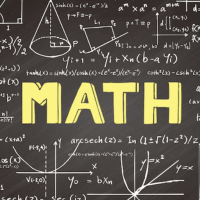JEE Exam > JEE Questions > In linear programming problems the optimum so...
Start Learning for Free
In linear programming problems the optimum solution
- a)satisfies a set of piecewise – linear inequalities (called constraints)
- b)satisfies a set of linear inequalities (called linear constraints)
- c)satisfies a set of quadratic inequalities (calledconstraints)
- d)satisfies a set of cubic inequalities (calledconstraints)
Correct answer is option 'B'. Can you explain this answer?
Verified Answer
In linear programming problems the optimum solutiona)satisfies a set o...
In linear programming problems the optimum solution satisfies a set of linear inequalities (called linear constraints) .
Most Upvoted Answer
In linear programming problems the optimum solutiona)satisfies a set o...
Explanation:
Linear Programming Problems:
Linear programming involves optimizing a linear objective function subject to a set of linear constraints. The goal is to find the values of the decision variables that maximize or minimize the objective function while satisfying all constraints.
Optimum Solution:
The optimum solution in linear programming problems refers to the values of the decision variables that result in the maximum or minimum value of the objective function while still meeting all the constraints.
Linear Inequalities:
In linear programming, the constraints are typically represented as linear inequalities. These are mathematical statements that involve linear expressions (variables raised to the power of 1) connected by inequality symbols such as ≤, ≥, or =.
Optimum Solution and Linear Inequalities:
The optimum solution in linear programming satisfies a set of linear inequalities, also known as linear constraints. These constraints define the feasible region within which the optimal solution must lie. The optimal solution is the point within this feasible region that maximizes or minimizes the objective function.
Conclusion:
Therefore, in linear programming problems, the optimum solution always satisfies a set of linear inequalities or linear constraints. This is a fundamental aspect of linear programming and is crucial for finding the most efficient solutions to optimization problems.
Linear Programming Problems:
Linear programming involves optimizing a linear objective function subject to a set of linear constraints. The goal is to find the values of the decision variables that maximize or minimize the objective function while satisfying all constraints.
Optimum Solution:
The optimum solution in linear programming problems refers to the values of the decision variables that result in the maximum or minimum value of the objective function while still meeting all the constraints.
Linear Inequalities:
In linear programming, the constraints are typically represented as linear inequalities. These are mathematical statements that involve linear expressions (variables raised to the power of 1) connected by inequality symbols such as ≤, ≥, or =.
Optimum Solution and Linear Inequalities:
The optimum solution in linear programming satisfies a set of linear inequalities, also known as linear constraints. These constraints define the feasible region within which the optimal solution must lie. The optimal solution is the point within this feasible region that maximizes or minimizes the objective function.
Conclusion:
Therefore, in linear programming problems, the optimum solution always satisfies a set of linear inequalities or linear constraints. This is a fundamental aspect of linear programming and is crucial for finding the most efficient solutions to optimization problems.

|
Explore Courses for JEE exam
|

|
Question Description
In linear programming problems the optimum solutiona)satisfies a set of piecewise – linear inequalities (called constraints)b)satisfies a set of linear inequalities (called linear constraints)c)satisfies a set of quadratic inequalities (calledconstraints)d)satisfies a set of cubic inequalities (calledconstraints)Correct answer is option 'B'. Can you explain this answer? for JEE 2025 is part of JEE preparation. The Question and answers have been prepared according to the JEE exam syllabus. Information about In linear programming problems the optimum solutiona)satisfies a set of piecewise – linear inequalities (called constraints)b)satisfies a set of linear inequalities (called linear constraints)c)satisfies a set of quadratic inequalities (calledconstraints)d)satisfies a set of cubic inequalities (calledconstraints)Correct answer is option 'B'. Can you explain this answer? covers all topics & solutions for JEE 2025 Exam. Find important definitions, questions, meanings, examples, exercises and tests below for In linear programming problems the optimum solutiona)satisfies a set of piecewise – linear inequalities (called constraints)b)satisfies a set of linear inequalities (called linear constraints)c)satisfies a set of quadratic inequalities (calledconstraints)d)satisfies a set of cubic inequalities (calledconstraints)Correct answer is option 'B'. Can you explain this answer?.
In linear programming problems the optimum solutiona)satisfies a set of piecewise – linear inequalities (called constraints)b)satisfies a set of linear inequalities (called linear constraints)c)satisfies a set of quadratic inequalities (calledconstraints)d)satisfies a set of cubic inequalities (calledconstraints)Correct answer is option 'B'. Can you explain this answer? for JEE 2025 is part of JEE preparation. The Question and answers have been prepared according to the JEE exam syllabus. Information about In linear programming problems the optimum solutiona)satisfies a set of piecewise – linear inequalities (called constraints)b)satisfies a set of linear inequalities (called linear constraints)c)satisfies a set of quadratic inequalities (calledconstraints)d)satisfies a set of cubic inequalities (calledconstraints)Correct answer is option 'B'. Can you explain this answer? covers all topics & solutions for JEE 2025 Exam. Find important definitions, questions, meanings, examples, exercises and tests below for In linear programming problems the optimum solutiona)satisfies a set of piecewise – linear inequalities (called constraints)b)satisfies a set of linear inequalities (called linear constraints)c)satisfies a set of quadratic inequalities (calledconstraints)d)satisfies a set of cubic inequalities (calledconstraints)Correct answer is option 'B'. Can you explain this answer?.
Solutions for In linear programming problems the optimum solutiona)satisfies a set of piecewise – linear inequalities (called constraints)b)satisfies a set of linear inequalities (called linear constraints)c)satisfies a set of quadratic inequalities (calledconstraints)d)satisfies a set of cubic inequalities (calledconstraints)Correct answer is option 'B'. Can you explain this answer? in English & in Hindi are available as part of our courses for JEE.
Download more important topics, notes, lectures and mock test series for JEE Exam by signing up for free.
Here you can find the meaning of In linear programming problems the optimum solutiona)satisfies a set of piecewise – linear inequalities (called constraints)b)satisfies a set of linear inequalities (called linear constraints)c)satisfies a set of quadratic inequalities (calledconstraints)d)satisfies a set of cubic inequalities (calledconstraints)Correct answer is option 'B'. Can you explain this answer? defined & explained in the simplest way possible. Besides giving the explanation of
In linear programming problems the optimum solutiona)satisfies a set of piecewise – linear inequalities (called constraints)b)satisfies a set of linear inequalities (called linear constraints)c)satisfies a set of quadratic inequalities (calledconstraints)d)satisfies a set of cubic inequalities (calledconstraints)Correct answer is option 'B'. Can you explain this answer?, a detailed solution for In linear programming problems the optimum solutiona)satisfies a set of piecewise – linear inequalities (called constraints)b)satisfies a set of linear inequalities (called linear constraints)c)satisfies a set of quadratic inequalities (calledconstraints)d)satisfies a set of cubic inequalities (calledconstraints)Correct answer is option 'B'. Can you explain this answer? has been provided alongside types of In linear programming problems the optimum solutiona)satisfies a set of piecewise – linear inequalities (called constraints)b)satisfies a set of linear inequalities (called linear constraints)c)satisfies a set of quadratic inequalities (calledconstraints)d)satisfies a set of cubic inequalities (calledconstraints)Correct answer is option 'B'. Can you explain this answer? theory, EduRev gives you an
ample number of questions to practice In linear programming problems the optimum solutiona)satisfies a set of piecewise – linear inequalities (called constraints)b)satisfies a set of linear inequalities (called linear constraints)c)satisfies a set of quadratic inequalities (calledconstraints)d)satisfies a set of cubic inequalities (calledconstraints)Correct answer is option 'B'. Can you explain this answer? tests, examples and also practice JEE tests.

|
Explore Courses for JEE exam
|

|
Signup for Free!
Signup to see your scores go up within 7 days! Learn & Practice with 1000+ FREE Notes, Videos & Tests.























